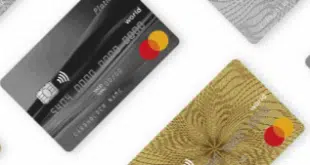PIN debit transactions are growing significantly faster than signature debit payments. Checks processed electronically are approaching half of all checks paid. And transactions on the automated clearing house are growing faster than any other form of payment. These are among the more surprising results of the Federal Reserve's tri-annual payments study, released on Monday. The study, which actually comprises three separate research projects comparing payments in 2006 and 2003, includes input from 1,400 financial institutions about payments from deposit accounts along with information from 65 of the largest payment networks and card issuers. The Fed estimates the total number of electronic payments, excluding ATM transactions, increased to 93.3 billion in 2006 from 81.4 billion in 2003, for a compound annual growth rate of 4.6%. The value of the 2006 payments is estimated at $75.8 trillion. Checks' market share is not only declining but doing so at an accelerating rate. The number of checks paid in 2006 was 30.6 billion compared with 37.3 billion in 2003 for a compounded annual rate of decrease of 6.4%. Back in 2000, the number of checks paid was 41.9 billion, translating into a negative 3.8% annualized growth rate in the 2000-2003 period. Checks written?checks paid plus the number of checks converted to ACH transactions?decreased at a somewhat slower annual pace in the 2003-06 period, 4.1%, to 33.1 billion in 2006 from 37.6 billion in 2003. But the increasing electronification of check payments is an even bigger story. The Fed estimates 40% of checks paid in 2006 were converted to electronics at some point in the collection process. That reflects the impact of Check 21, officially the Check Clearing Act for the 21st Century, which took effect in late 2004 and fostered the creation of image-exchange networks for checks. “That's a pretty significant number,” Richard Oliver, executive vice president of the Federal Reserve Bank of Atlanta and the Fed's product manager for retail payments, tells Digital Transactions News. Oliver notes that the survey period captured only slightly more than the first two years that Check 21 options have been available. “We've cleared the 50% number of the deposit side at the Fed,” he says. ACH transactions grew faster than all other payment forms, with compounded annual growth of 18.6% from 2003 to 2006. The total number of transactions hit 14.6 billion compared with 8.8 billion in 2003. The number of checks written but converted to ACH payments, or electronic checks, exploded to 2.6 billion in 2006 from just 300 million in 2003 for an annualized growth rate of 105%. Part of that growth is coming from the point of purchase, or POP, e-check code adopted by No. 1 retailer Wal-Mart Stores Inc. and other merchants, according to Oliver. He expects e-checks to get a further boost from the new back-office conversion, or BOC, code that went live in March (Digital Transactions News, Dec. 7). Debit cards, meanwhile, continued their strong run that began back in the 1990s and, as the payment card networks also have reported, now surpass credit cards in transaction volume. The Fed says total debit card payments hit 25.3 billion in 2006 compared with 15.6 billion in 2003 for an annual growth rate of 17.5%. “The advance there has been astounding, in my mind,” says Oliver. Surprisingly, growth in PIN debit is far outstripping that of signature-based debit, with PIN-based transactions increasing 77% in the three-year period compared with 55% for signature-based debit. This is despite heavy signature-debit marketing pushes by Visa, MasterCard, and banks. Debit card issuers promote signature debit, and in some cases discourage PIN transactions, because they earn more interchange revenue on signature- than on PIN-debit transactions. But efforts by merchants, including Wal-Mart, to push lower-cost PIN debit appear to be effectively counteracting that promotion, according to Oliver. Merchants not only are installing more PIN-reading point-of-sale terminals, but they're also employing the practice of “PIN-prompting” in which the terminal automatically asks the customer to enter the PIN when a debit card offering both options is swiped. In contrast to debit's go-go performance, credit card transaction volume hit 21.7 billion in 2006 compared with 19 billion in 2003, for an annual growth rate of only 4.6%, reflecting credit's maturity among U.S. cardholders. Credit card charge volume, however, remains far higher: an estimated $2.1 trillion in 2006 versus $1 trillion for debit. The study also confirmed another much-discussed trend, the decline in ATM usage. The Fed says withdrawal transactions, estimated at 5.8 billion last year, decreased at a 0.4% annual rate in the study period. The Fed estimates that electronic benefits transfer transactions grew at a 10% annual rate in the three-year period, hitting 1.1 billion transactions in 2006.
Check Also
A Time-Tested Playbook Fuels Visa’s Growth, Its Top Brass Says
A proven business model built around executing the fundamentals in consumer and business payments was …




